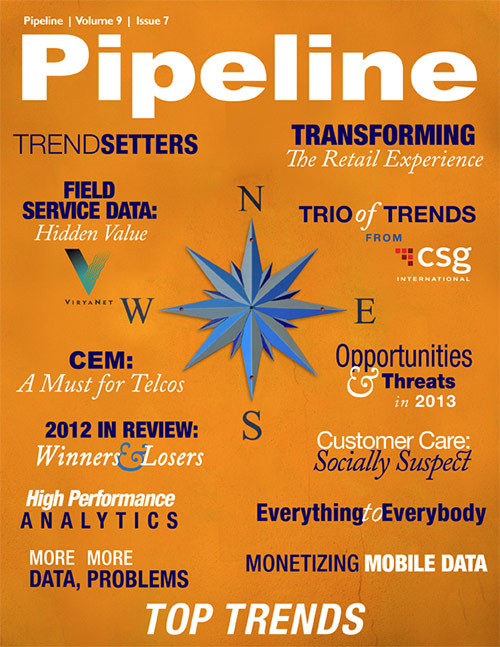Agile Operator Survey: 2013 Opportunities and Threats
A quest for success
In light of these trends CHR Solutions brought together top executives from their Tier 2 and Tier 3 customer base, creating an industry think tank to answer the most pressing questions of 2012. The group’s responses offer valuable insight for CSPs as the new year approaches.
What potential financial implications should I expect as they relate to USF and ICC reform, and how do I prepare my organization to ensure regulatory compliance?
Rural local exchange carriers (LECs) should expect less regulatory support for deploying improved networks. In fact there will be less revenue available to support current networks. In spite of this, customers and regulators will expect more vibrant networks. With this change in the business environment, carriers will be required to make difficult decisions regarding how they operate their current network and where they expand or improve tomorrow’s network. Ironically — and disturbingly — the regulatory requirement to achieve minimal broadband capabilities and maximum broadband deployment requires a five-year plan demonstrating accomplishments toward that goal. Rural LECs who are behind the curve in providing minimum broadband speeds to the maximum number of customers and service areas will require a careful balance of available technology and capital. To create the capital required, rural LECs will have to critically examine and act upon their operating costs, seeking efficiencies and maintaining profitable best practices. From a regulatory compliance perspective, rural LECs must also seek changes to old rules that no longer apply in the current or future market and continue to advocate the impacts of the new, unfunded mandates.
What network-distribution methodologies or combination of methodologies are service providers trending toward in order to meet the buildout criteria set forth by the FCC without crippling capital investment?
The long-term goal for service providers is still Fiber to the Premises (FTTP); CHR believes this is the most future-safe investment. The question becomes: in a limited high-cost support model, how do providers make the investment in broadband facilities that their customers will pay for but still maintain a viable business model? FTTP provides the single step to the broadband solution, and should continue to be the end goal if a company can manage the capital investment in the technology. In the long run there are also reduced operational and maintenance cost benefits to be gained.
xDSL over existing copper-facilities methodology provides a means to offer the FCC standard of 4Mbps downstream and 1Mbps upstream (4/1) over a defined, shortened loop length. The drawback to this technology is the limitations to the upstream bandwidth of approximately 1.3Mbps, but it can be augmented by the use of pair bonding to gain more upstream and downstream if additional viable copper pairs are available. (There is an additional cost due to the use of an additional port on the Broadband Loop Carrier.)
4G LTE is a licensed wireless technology using 700MHz and AWS spectrum to offer the minimum FCC bandwidths in fairly uniform terrain in a radius of up to 5-7 miles from a tower. To be scalable with broadband traffic, these towers will need to be fiber fed and contain sufficient network capacity to carry the increase in projected broadband demand. To provide this service, a service provider must have access through purchase or lease of the spectrum. The 4G LTE provides a good platform to either be a complementary service to a provider with wireline service or be used as an edge-out strategy to extend broadband to sparse areas without having to construct facilities.
802.11ac in the 5MHz unlicensed spectrum (Wi-Fi) is a method for offering smaller areas good bandwidth if the current wired facilities are not capable of delivering higher speeds of broadband. The technology is easy to install and fairly cost-effective.
In summary a service provider should have an understanding of the bandwidth desires its client base will pay for and what it will need to provide to stay competitive. If it has no competitors the minimum 4/1 may be adequate in the near term, but in a competitive situation where customers are demanding and will pay for higher and more symmetrical speeds, the options become limited to FTTP and wireless. It is the opinion of CHR, based on independent research, that speeds in excess of 4/1 will be required by consumers in the future; the number of broadband devices in the average home continues to increase, as do the applications for bandwidth, and the use of the products is becoming more widespread. The telephone company of the past 50 years is rapidly disappearing and will be replaced by the broadband company of the future. How service providers offer products, services and the ability to supply ample bandwidth will determine their future.



















